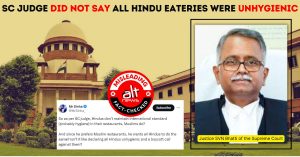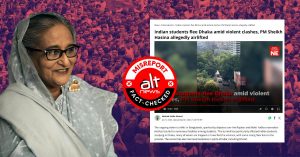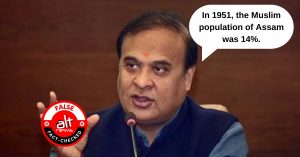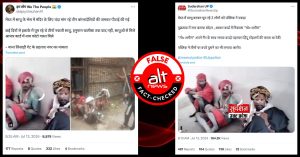On November 9-10, Eid Milad-un-Nabi was celebrated in Kashmir’s Hazratbal shrine to observe the birth of Prophet Muhammed. According to a report in The Hindu by Kashmiri journalist Peerzada Ashiq, “All entry points to the mosque, including Habak area on the outskirts of the city and the Rainawari and Sadrabal areas in the old city, were closed for traffic. The security forces started spreading concertina wires on the streets and used mobile bunkers to block several stretches on Saturday as part of an exercise to impose restrictions.”
A resident attending the prayers since 1990 told the media outlet, “It is the first time in my living memory that such a thin attendance of worshippers was observed on the auspicious occasion in Kashmir. Only locals living in nearby areas turned up for the night-long prayers…”
Similar news emerged from other media outlets, including PTI which said, “Authorities on Sunday sealed all roads leading to the Hazratbal Shrine here as a precautionary measure to maintain law and order in view of the Supreme Court ruling in the Ayodhya case and Eid-Milad-un-Nabi, officials said.” Local reports carried similar accounts of restrictions imposed to prevent large gatherings.
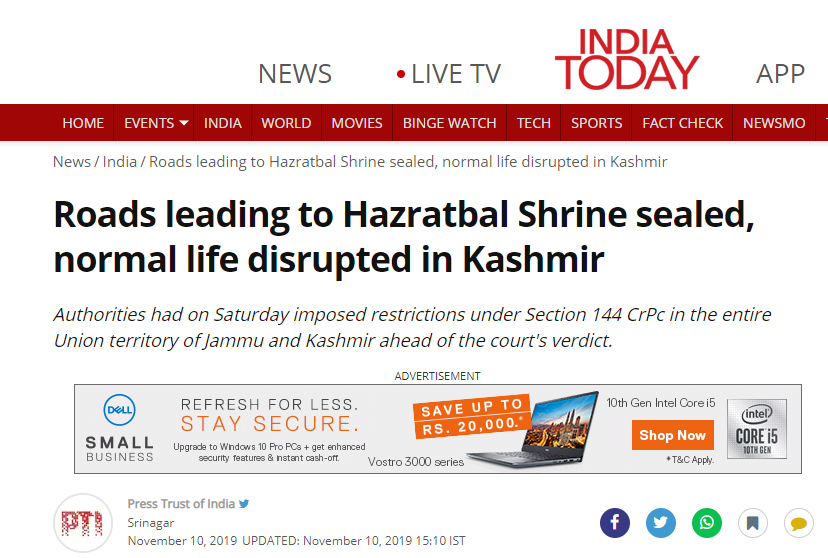
NO RESTRICTIONS, CLAIM A SECTION OF THE MEDIA
However, a section of the media circulated a video to counter the claim of restrictions. Among the firsts was Republic TV’s Aditya Raj Kaul who asserted that thousands had gathered in the occasion.
Soon after, the same clip was shared by Ashish Singh of ABP News, journalist Aarti Tikoo Singh and Doordarshan. News agency ANI also asserted that thousands had gathered at the shrine.
Thousands prayed at Hazratbal and holy Relic Moi-e-Muqaddas was displayed as per tradition at holy Hazratbal shrine in #Srinagar. Disinformation was spread that prayers were not allowed on 10 November#FakeNews pic.twitter.com/vUD72hqN7m
— Doordarshan News (@DDNewsLive) November 12, 2019
Ironically, Times Now broadcast a show based on the video two days later and termed it “breaking news here first.”
#Breaking | TIMES NOW accesses video proof of Hazratbal shrine truth. Lutyens lobby who claimed people were not allowed to offer prayers in Hazratbal shrine has been exposed.
Details by TIMES NOW’s Pradeep Dutta. Listen in. pic.twitter.com/srDv2KGYp0
— TIMES NOW (@TimesNow) November 12, 2019
WHAT IS THE TRUTH?
It is noteworthy that most media outlets and journalists mentioned above claimed that disinformation was spread that the prayers were not allowed. However, this is untrue. News organisations that carried reports on Eid Milad wrote that prayers were “restricted”, not banned.
Take for instance this article in The Tribune which said, “Restrictions around Hazratbal shrine to prevent big congregation on Eid Milad eve.”
Quoting a Kashmiri journalist, NDTV’s Nidhi Razdan also used the word “restricted”. However, in a reply to the journalist, Aarti Tikoo Singh wrote, “A section of Indian media ran a disinformation campaign that prayers were not allowed by Indian security forces at the Hazratbal shrine in Srinagar on Eid Milad yesterday.”
A section of Indian media ran a disinformation campaign that prayers were not allowed by Indian security forces at the Hazratbal shrine in Srinagar on Eid Milad yesterday. Guess, who is using this fake news the most? Pakistan. Now check this & see for yourself what the truth is. https://t.co/lMuJjqUrZV pic.twitter.com/5q8Z5FJcWS
— Aarti Tikoo Singh (@AartiTikoo) November 11, 2019
Alt News spoke with multiple freelance journalists and photojournalists from the Valley who informed that while prayers were indeed offered, the number of devotees was sparse. Photojournalist Sheikh Yamin put the strength of the gathering at around 400-500 people at 2:30 PM, which according to him was the peak time. “The gathering is usually in thousands but very few people came because of the blockade. Most people who turned up hailed from surrounding areas. The security personnel stopped vehicles, people on foot were able to enter,” Yamin added.
Yamin shared visuals from the day which show a scattered gathering among security personnel. From 1:03 in the video below, some devotees can be seen offering prayers.
If one were to compare publicly available photographs from November 10, 2019, with those of celebrations in Hazratbal in past years, the massive difference in the strength of the gathering is evident. In the collage below, the first image depicts recent celebrations, the second is from 2016; third, 2011 and the fourth, 2014.
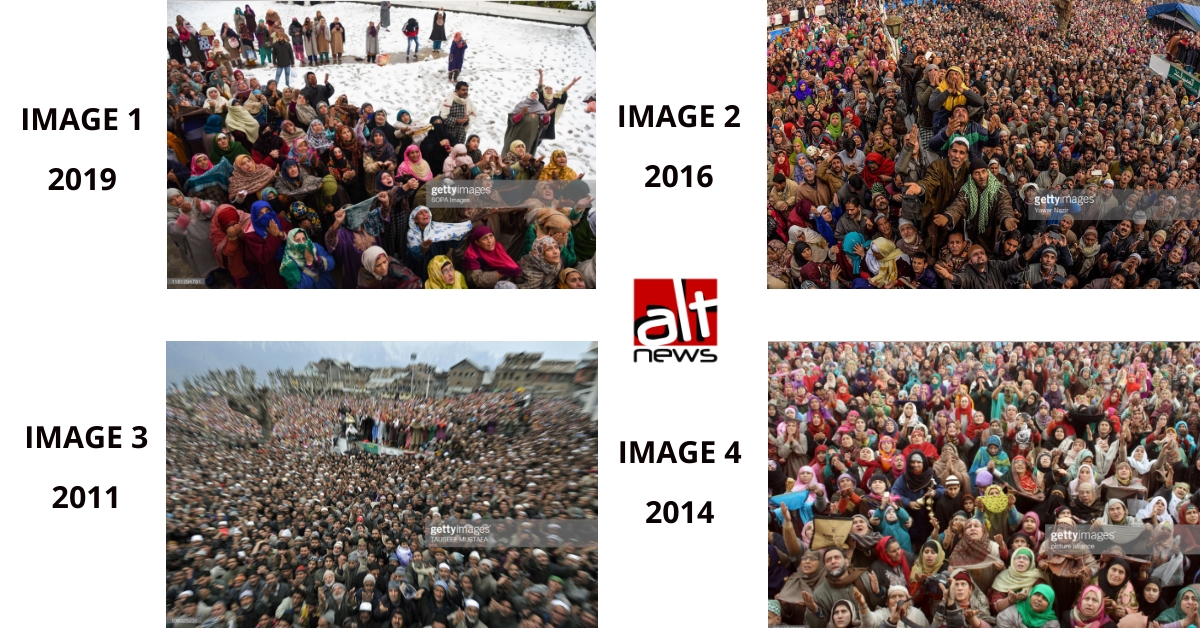
A freelance journalist who did not wish to be named told Alt News that at 1 PM, a cleric showed the devotees a relic believed to be a hair from the beard of the Prophet Mohammed. “Thousands of people gather for the Zuhr since the event takes place once or twice a year. Very few people had turned up in the morning. When photographers went at 1 PM, a few people from neighbouring areas had turned up. There were no restrictions on offering prayers however because of the blockade many were unable to come.”
The relic is displayed not only on the occasion of Eid Milad but also on Mehraj-ul-Alam, which is believed to be the night when the Prophet Muhammad ascended to the highest levels of Heavens. This year the festival was observed in April. The photo-montage below is a comparison of the strength of the gathering then and now at the same location. The white structures visible in both images are tents. They are marked in red and yellow colours. In the April 2019 image, one of the tents in inflated. Marked in green is a raised platform where people can be seen standing. The blue boundary visible behind the trees is marked in purple.

The freelance journalist also informed that the restrictions imposed due to the Ayodhya verdict can be linked to the thin attendance, which according to him was about twenty per cent of the usual strength.
Since November 9 midnight, restrictions under section 144 of the CrPC came into force as a precautionary measure in the wake of the Ram Janmbhoomi-Babri Masjid land dispute case. The verdict was announced the same day.
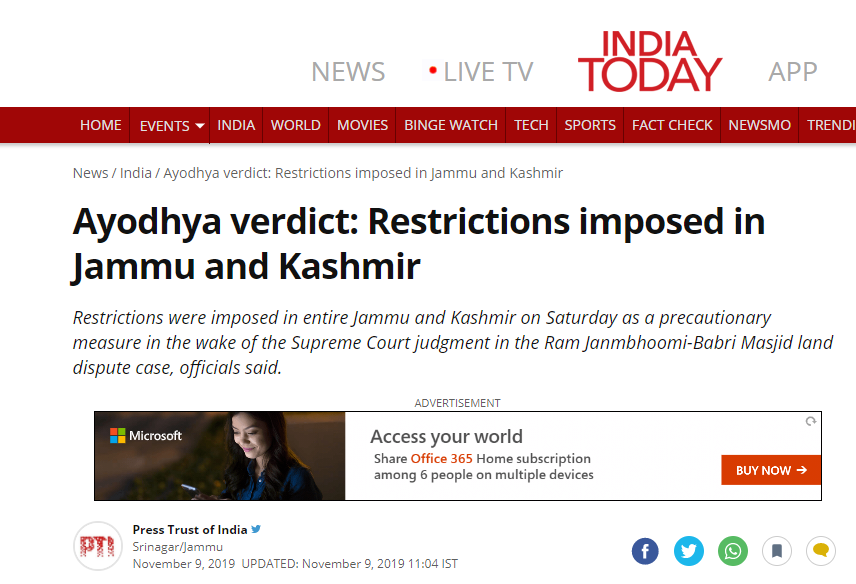
The scanty gathering was also reported by several other Kashmiri journalists.
First time in Kashmir history, devotees to miss glimpse of holy relic at Hazratbal Shrine Srinagar Indian administered Kashmir on November 10,2019,No major gathering to be allowed at revered shrine on Milad (SAW). pic.twitter.com/0wlOzO3fQE
— Peerzada waseem (@waseemjourno) November 10, 2019
In contrast, the strength of the devotees was much larger last year.
Tens of thousands throng Hazratbal on Friday following Eid-e-Milad-un-Nabi (saw)https://t.co/4XsIMh6Upf pic.twitter.com/izml2swN6j
— Greater Kashmir (@GreaterKashmir) November 24, 2018
The continued lockdown in Kashmir coupled with restrictions imposed due to the Ayodhya verdict were major contributing factors to low devotee turnout at Hazratbal shrine on Eid Milad. While most reports stated the same, a few organisations and journalists shared a video to portray normalcy. However, a quick rummage through the archive of photos and videos of the event in past years establish that the situation was far from normal.
Independent journalism that speaks truth to power and is free of corporate and political control is possible only when people start contributing towards the same. Please consider donating towards this endeavour to fight fake news and misinformation.

